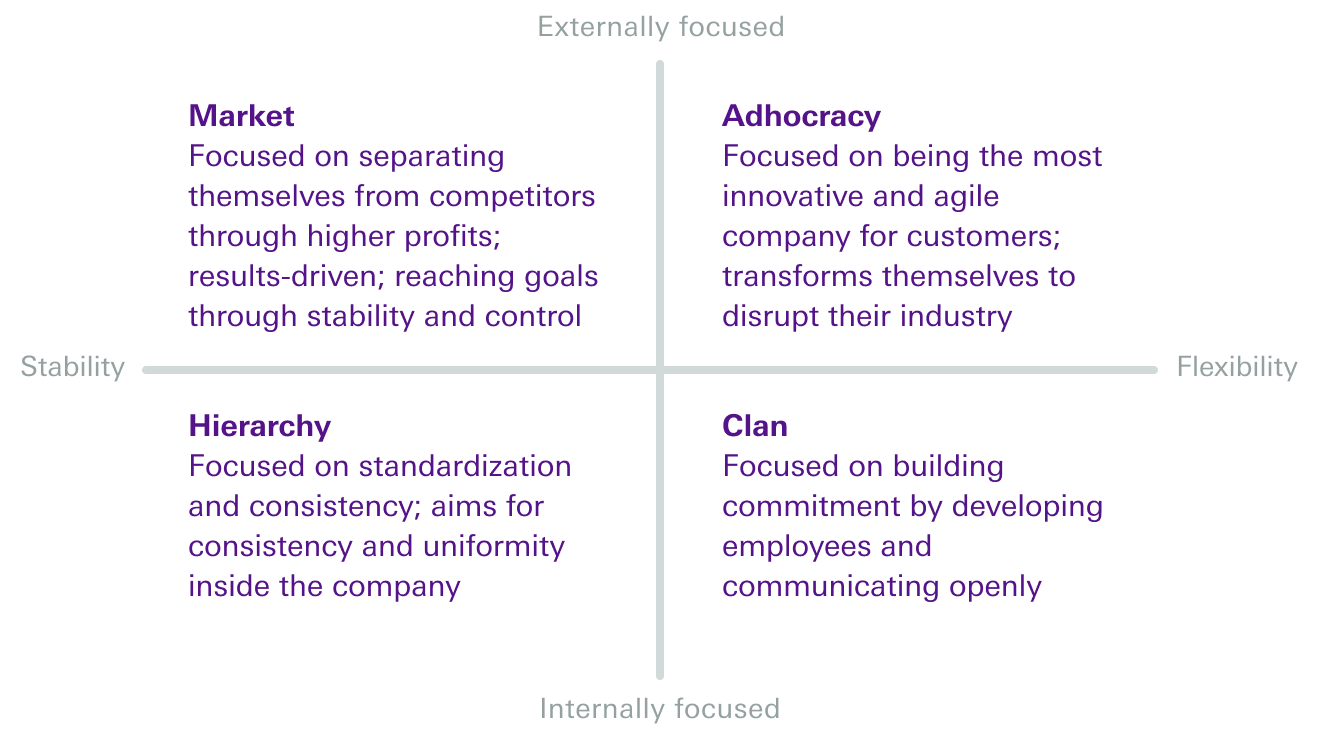“Culture eats strategy for breakfast.”
We’ve all heard it. We know the best-laid plans can fail if the company’s actions don’t line up with them. But how important is your organization’s culture to success, really?
In a recent survey of 1,300 executives, 92% of them think culture predicts a firm’s value. But which metrics of success matter? Today, we’re exploring five key performance indicators of company success. Knowing whether a better culture increases a firm’s financial, operational, and innovation performance is the first step towards improving it. Answering this uncovers more questions, including “how much does culture matter to firm success?” and “is it more important than other elements, like leadership?”
Nine in ten executives think culture predicts a firm’s value. But does it? And for which value metrics?
Big questions like these need an equally impressive dataset. That’s why Chad Hartnell and his fellow researchers gathered 148 studies of over 26,000 companies, compiling 557,000 people’s data to explore how closely related culture and company performance are. To check whether culture is uniquely useful for explaining company success, Hartnell and the team compared the predictive power of culture elements with leadership styles and high-performance work practices like rewards, policies, and procedures.

What do we mean by culture?
It’s a word often used, but rarely defined and categorized. To tackle the challenge of defining company culture, Hartnell included studies that consistently used a popular culture diagnosis model called the Competing Values Framework (CVF). The CVF belongs to a class of culture assessment tools called typing instruments. It categorizes organizations into mutually exclusive culture types. The CVF differentiates four such types of cultures — clans, adhocracies, hierarchies, or markets. The CVF model argues that the same type of organizations have similar cultures.
This four-type approach to culture has risks: it is overly simplified and can stereotype companies. But if the culture types are linked to business success, this high-level overview can still be useful. These results add to the nuanced, detailed culture instruments we use at Orgnostic. The Denison culture model, which we described in one of our earlier blog posts, is based on the same principles as the four-type approach: adapting to external pressures and integrating the company’s internal processes.

Which company cultures are most related to company success?
Some cultures may be better for innovation, while others may lead a company to financial success. The chart below shows which broad type of company culture is best for each element of company success.
| Culture Types: | This culture type is better for: |
|---|---|
| Clan | Employee Experience, Innovation, and Customer Experience |
| Adhocracy | Employee Experience, Operational Performance, and Innovation |
| Market | Operational Performance, Customer Experience, and Innovation |
| Hierarchy | Operational Performance, Employee Experience, and Financial Performance |
These four culture types generally have a small positive impact on company success. Specifically, clan cultures, with a focus internally on employee development, are related to higher innovation, employee experience, and customer experience but lower short-term financial performance. An adhocracy culture, focused on innovation and agility, is related to more innovation, employee experience, and operational performance but surprisingly lower customer experience.
Market cultures, focused on profit and results, have no link to financial performance or employee experience. However, companies with a market culture do have higher innovation, operations, and customer experience. While their focus on driving results through control may not improve employee experience, their success may be reflected in operations and customer experience metrics.
Finally, hierarchical cultures have some benefits despite being high in control and internal focus. While these companies are less innovative, a hierarchical culture has a small positive connection to financial performance. This may come from a focus on efficiency that explains the operational benefits of hierarchical cultures. Interestingly, companies with more hierarchy had moderately higher employee experience. This might come from the internal focus, structure, and consistency that hierarchy brings.
Do leadership and work practices matter for firm success, beyond the company’s culture?
Hartnell and colleagues tested how leadership and work practices, other company elements beyond culture, overlap with a company’s five success factors.
- The three types of leadership are: task-focused (efficiency, direction, and coordination), relationship-focused (support, encouragement, and team identity), and change-focused (encourage innovation and monitor the outside environment)
- High-potential work practices are: techniques that increase employees’ skills, motivation, and opportunities including self-managed teams, employee involvement, and training & development
- The five success factors are: innovation, financial performance, operational performance, employee experience, and customer experience.
Across these 26,000 companies, the four culture types were related to all five success factors. Culture types added predictive power beyond leadership and high-potential work practices, especially for innovation and customer/employee experience. This means company cultures are connected to, but aren’t exactly the same as leadership and work practices. These results, using CVF dimensions of clan, adhocracy, market, and hierarchy, show us that we need to embrace complex, competing issues like change vs stability, efficiency vs innovation, and collaboration vs competition.
| Company Success Factors: | The Organizational System (Culture, Leadership, Work Practices) Accounts for: |
|---|---|
| Innovation | 32% of output in development of new procedures, practices, or products |
| Employee Experience | 28% of output in employees’ job satisfaction, commitment, and perceived organizational support |
| Customer Experience | 24% of output in customer loyalty, complaint reductions, satisfaction, and market share growth |
| Operational | 24% of output in service quality, defect rate reduction, cycle time |
| Financial | 16% of output in profitability, return on assets, and return on sales, and revenue growth |
When changing your firm’s culture, you must consider the whole organizational system that reinforces the culture you already have (Hrebniak, 2013). Focus on changing hiring, leadership, incentives, decision-making processes, and organizational structure, not just announcing new values to put up on the wall. Your employee behaviour will only change after rolling out these deeper shifts across your organization; after this, your culture will change as a result.
Align processes with business goals
Orgnostic allows you to map out key organizational dynamics that link with the business outputs you care about. Once our platform learns about your business goals and strategic orientation, you can:
- assess the processes that correlate the best with your business goals;
- get benchmarked insights on how to improve those bad habits and strengthen the good ones;
- track a curated set of metrics to focus on improving those over time to reach your goals faster.
